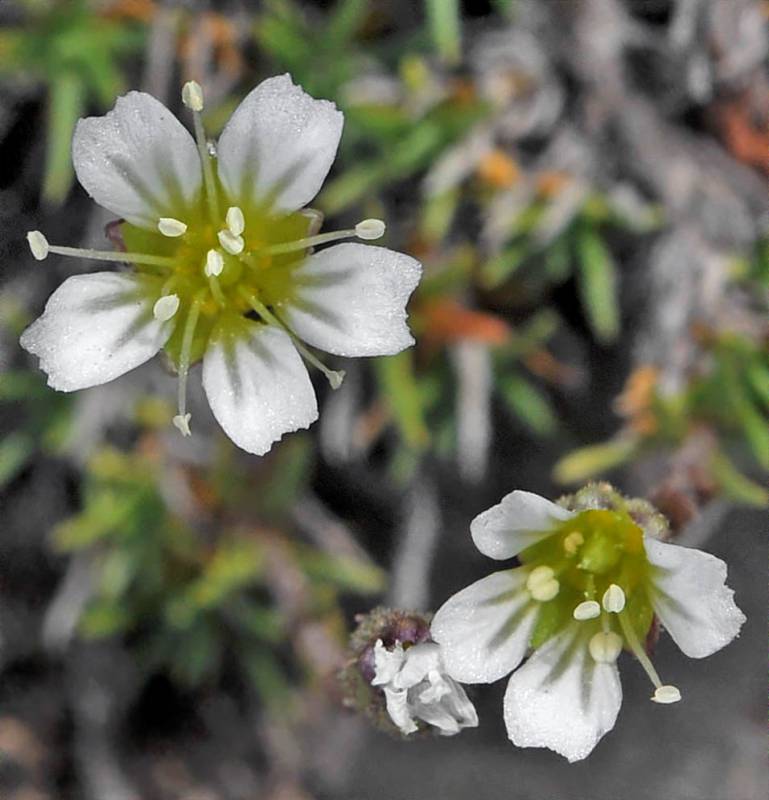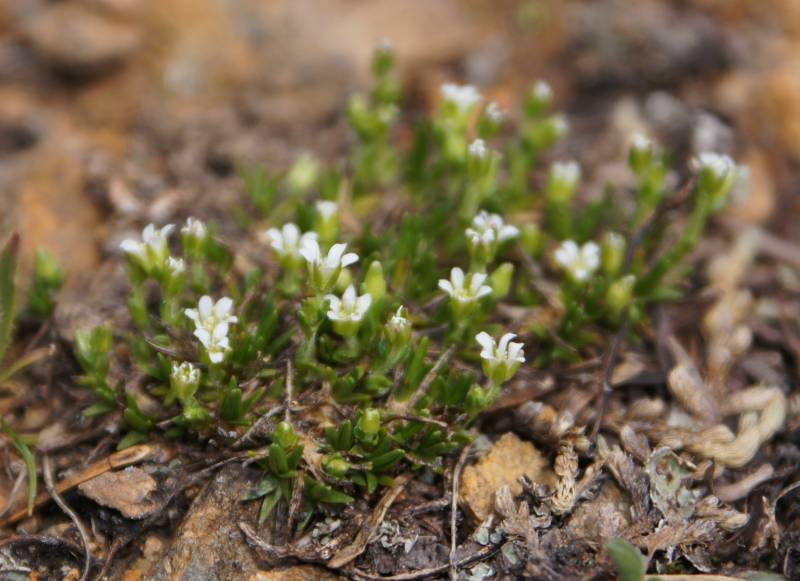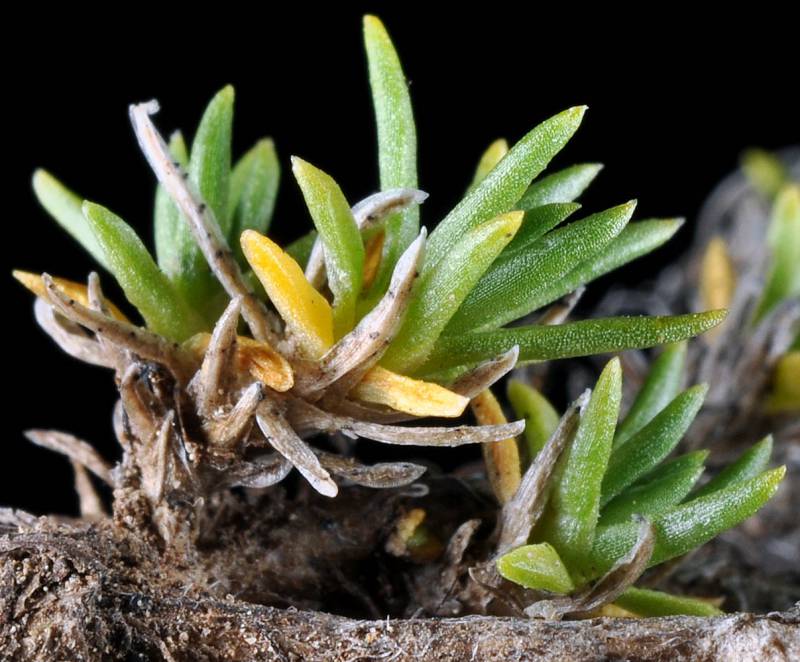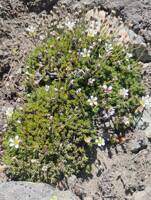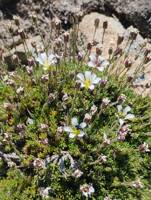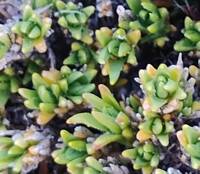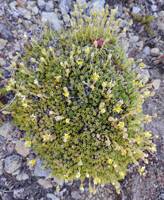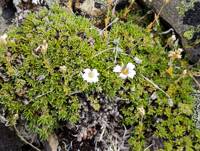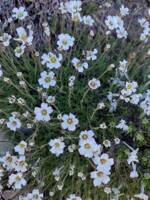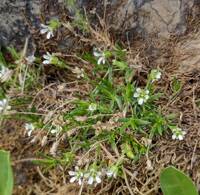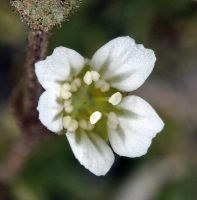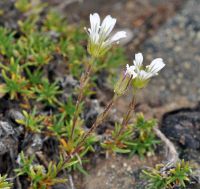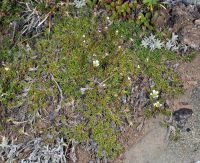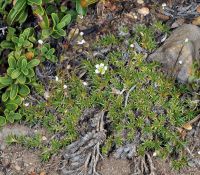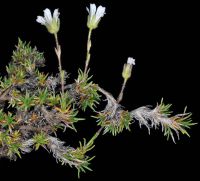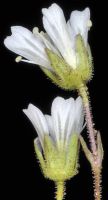Distribution: Occurring on both sides of the Cascades crest in Washington; Alaska to California, and in Rocky Mountains to Colorado and Arizona; circumboreal
Habitat: Moist subalpine to alpine slopes, often near snowbanks.
Flowers: June-August
Origin: Native
Growth Duration: Perennial
Conservation Status: Not of concern
Pollination: Bees, flies, wasps
Perrenial, mat-forming cushion, stout taproots; stems suberect to ascending, 2-10 cm. long; internodes 2 to 7 times leaf length.
Vegetative/proximal cauline or distal cauline, connate proximally, sheathed scariously or herbaceously, sheath 0.5-1 mm. long; blade straight and flat or curved outwardly, single veined abaxially, oblong or spatulate to elliptic, 5-10 x 0.7-2 mm., flexuous with margins thin or scarious, rarely ciliate, apex rounded, purple or green, shiny and glabrous; axillary leaves absent.
3 to 5 flowered cymes, open, bracts lanceolate and herbaceous; pedicels 0.5–1 cm., usually densely stipitate-glandular; hypanthium cup-shaped; sepals 3 veined, oblong to narrowly lanceolate, 3.5-4.5 mm. long, occasionally purple in herbaceous portion, apex rarely purple, not enlarging in fruit; petals white or lilac, broadly oblanceolate, roughly 1.5 times sepal length, apex truncate.
Capsules ellipsoid, 5.5 mm. long; seeds brown, suborbiculate with radicle prolonged into beak, 0.7–0.8 mm., compressed shape.
Publication: Willdenowia 47(1): 9. 2017.
PNW Herbaria: Specimen records of Cherleria biflora in the Consortium of Pacific Northwest Herbaria database
WA Flora Checklist: Cherleria biflora checklist entry
OregonFlora: Cherleria biflora information
E-Flora BC: Cherleria biflora atlas page
CalPhotos: Cherleria biflora photos

